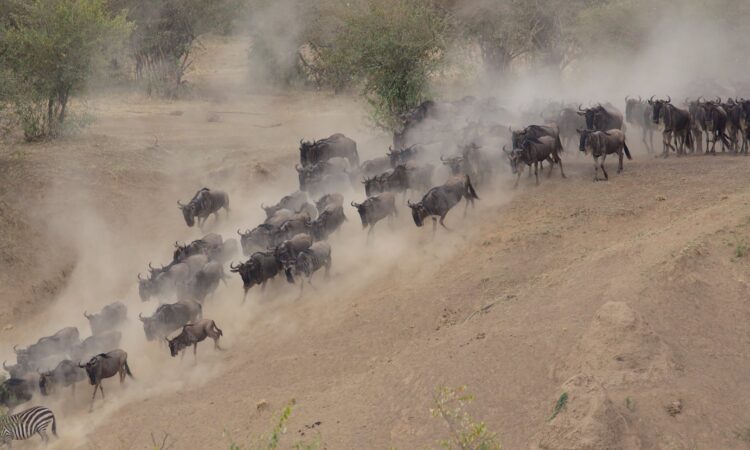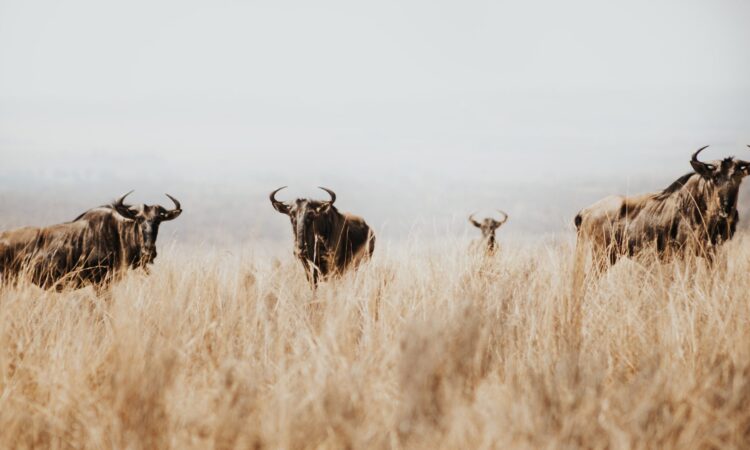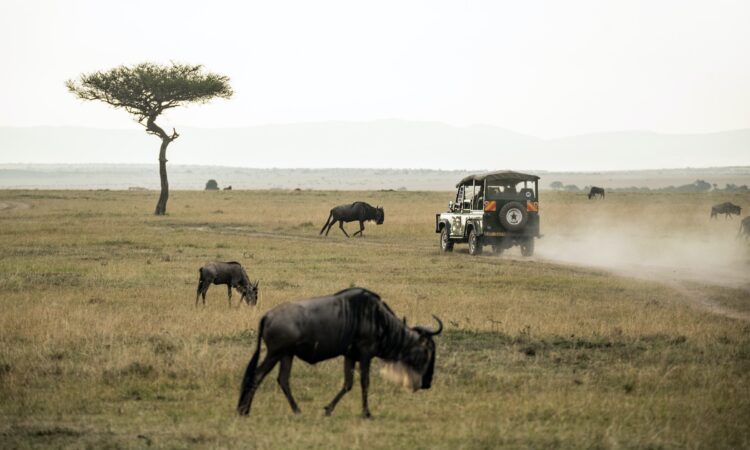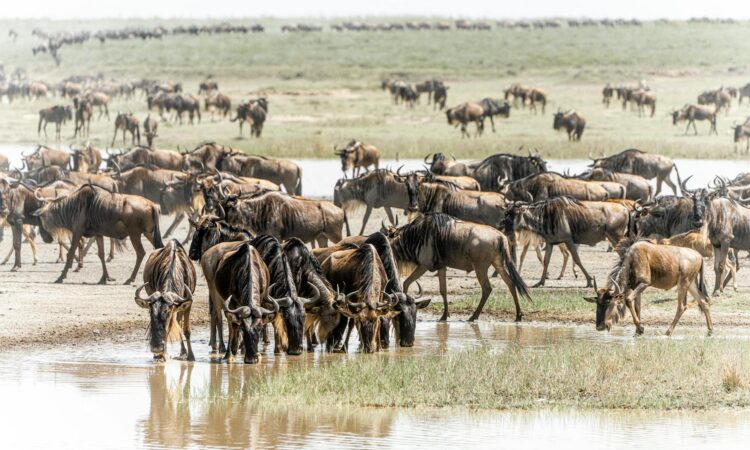Facts remain constant and hold the undeniable truth. Since learning is a continuous journey, let’s look at some key facts about the famous wildebeest migration that attracts tourists from around the world. These facts include:
- Wildebeests Don’t Have a Natural Leader: Wildebeests are not led by a single dominant animal. Instead, their movement is guided by changes in the weather that signal where fresh grass can be found. They travel from Serengeti National Park, pass through the Ngorongoro Conservation Area, and settle in the Masai Mara plains, where water and nutritious grass are available.
- Other Animals Join the Migration: It’s not only wildebeests that migrate. Zebras also follow the same trail. Thanks to their speed and size, zebras often manage to escape crocodile attacks, though they still face danger from lions with sharp teeth ready to hunt. Thompson’s gazelles, antelopes, and eland are also part of the journey, moving in search of food and water. This great movement of many species is truly worth seeing.
- The Largest Overland Migration in the World: This migration involves huge numbers of animals, giving tourists the chance to see species that are often hard to spot. Leopards, lions, and antelopes spread across the plains, creating an incredible sight. Around 1.5 million wildebeests, along with 300,000 zebras, impalas, eland, and gazelles, cross the Mara River.
- Predators Thrive During the Migration: Predators usually don’t rush into the river but wait on land to catch their prey. Photographers are also ready, aiming to capture dramatic moments of the food chain in action, which adds to the popularity of these national parks.
- The Wildebeests Migrate in Shifts: The wildebeests don’t all move at once. The first group crosses the Mara River into Kenya, while another group stays behind in the Serengeti. Their movement is based on the availability of grass. When one area is grazed down, some move on to fresher pastures while others remain to finish what’s left.
- Crocodiles Get Their Share Too: After long periods without much food, crocodiles finally get plenty to eat when the migration arrives. In the Mara River, it’s a fight for survival, and the weaker animals often don’t make it across.
- A Relatively New Phenomenon: This migration is not something that has been happening forever. It began in the 1960s and continues today.
- The Calving Season: As calving season approaches, wildebeests search for the best places to give birth. They also need to eat well to produce milk for their calves. This need drives them to move to areas rich in grass, such as the Ndutu Plains and the western Grumeti.
Prepare for a lifetime wildebeest migration by reaching out to our migration safari companies and experts or submit an inquiry below to start planning your unforgettable safari adventure with us.












